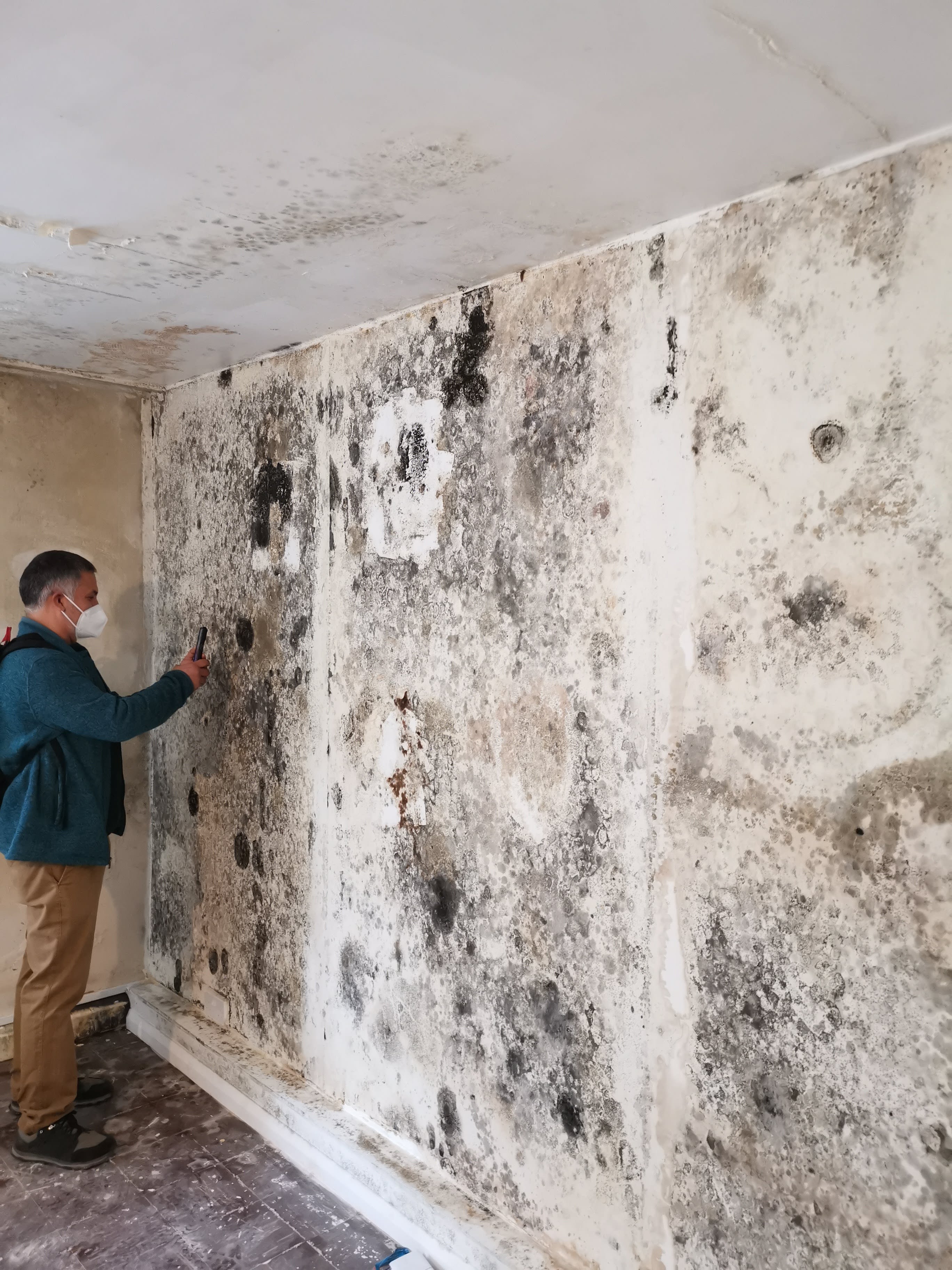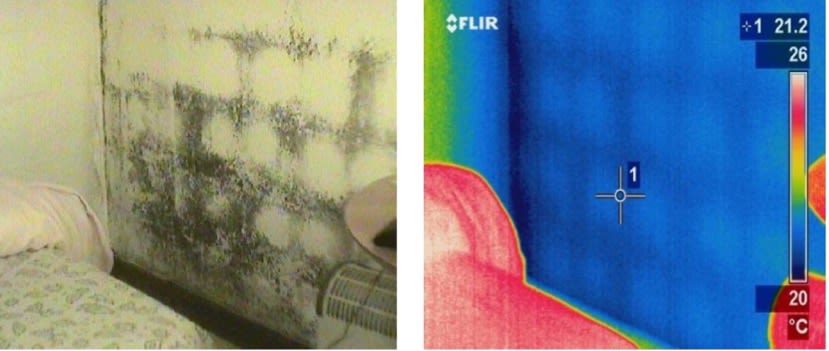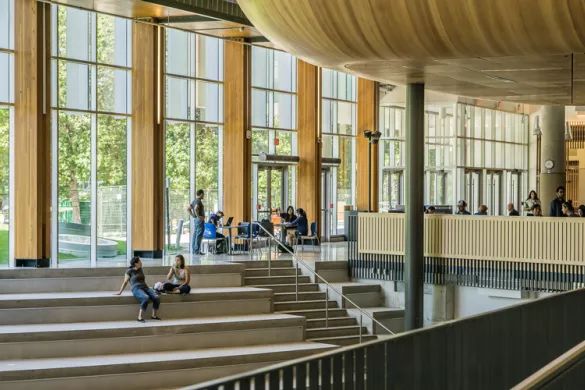Tackling moisture balance for healthier housing in London
From retrofit research to educating local authorities, academics from The Bartlett are applying their expertise to improve living conditions in London (and beyond)

It’s normal (and perfectly healthy) for buildings to contain moisture. However, when the amount of moisture present in the air becomes unbalanced, problems arise.
Lots of things can cause this imbalance, including poor ventilation, overcrowding or retrofit modifications to houses. If left unchecked, excessive building moisture can have serious health implications for the occupants.
Sadly, children often suffer the worst results of moisture-related respiratory diseases and other consequences – as was tragically demonstrated by the death of two-year old Awaab Ishak in December 2020.
With a higher proportion of older homes than anywhere else in Europe, UK housing is particularly prone to excessive moisture and the problems it causes. It is not simply the age of buildings, but also the legacy of weak space, ventilation and thermal performance standards up to the later part of the 20th century that leaves UK homes especially vulnerable to moisture problems. London homes, by proportion, are the smallest and oldest of all.
Combined with overcrowding due to the high price of London living space, this leads to moisture imbalance – which then leads to damaged houses that won’t heat properly, condensation, decay, mould growth and eventually, structural deterioration.
Then there’s the wider environmental impact. Aside from the additional carbon emissions that result from large populations struggling to heat their moisture-imbalanced homes, this widespread issue also undermines retrofit projects, particularly in social housing stock where the issues are often most acute.
The image shows a UKCMB academic sampling mould spores in a room with extensive black mould growth on the walls and ceiling, likely due to severe moisture damage.
The image shows a UKCMB academic sampling mould spores in a room with extensive black mould growth on the walls and ceiling, likely due to severe moisture damage.
Drawing on different disciplines to drive down damp
“There’s a high level of complexity, and there’s a lot we don’t know. Our research explores various aspects of moisture in buildings, from understanding and preventing mould growth to examining material behaviour and composition.”
At the UCL Institute for Environmental Design and Engineering (IEDE), building scientists Prof Hector Altamirano-Medina and Dr Valentina Marincioni are coordinating a varied range of projects focused on understanding and tackling moisture-related risks in UK housing. Research activities include assessing moisture risk, benchmarking mould spores, developing tools to assess ventilation, monitoring indoor air quality, and designing insulation systems that manage moisture more effectively, among others.
UCL’s strength in multiscale, multidisciplinary research means that the IEDE team can systematically examine the bigger picture – all the way from building materials, through to construction assemblies, whole buildings, and their occupants.
This way, they can better explore the links between physical materials and characteristics, and real-world housing conditions.
It also means they’re well-placed to help related projects, such as the groundbreaking collaboration between Islington Council and the UCL Energy Institute, where Valentina, a leading expert in building physics and moisture, provided expert guidance.
After advising on retrofit interventions for the initial plans to decarbonise Islington’s social housing, Valentina led a follow-up study to add an additional pathway, informed by a data-driven mould-risk index, setting out the potential plans of action open to Islington.
“We used the evidence from the surveyors and the theories around mould to develop an index. This meant we could identify similar buildings at higher risk, and then create a pathway that includes consideration of mould risk, and the interactions between mould and related factors like fuel poverty that can increase mould risk.”
Hector and Valentina’s work on moisture in buildings is relevant for a range of disciplines. They teach modules and provide content across subjects as diverse as chemistry, civil engineering, architecture and physics.
The image shows a side-by-side comparison of a mould-affected wall and its corresponding infrared thermal image. The infrared imaging highlights cooler areas (in blue) representing thermal bridges and areas where humidity is likely to be high, which are ideal conditions for mould to develop.
The image shows a side-by-side comparison of a mould-affected wall and its corresponding infrared thermal image. The infrared imaging highlights cooler areas (in blue) representing thermal bridges and areas where humidity is likely to be high, which are ideal conditions for mould to develop.
Bridging the gap between the research and the reality of retrofit
An important strand of Hector and Valentina’s research involves tackling unhelpful misconceptions that have grown around moisture in buildings.
Hector says, “Some concepts have been poorly used in industry. Take ‘breathability’. From a research perspective, we understand it quite well. But a lack of understanding around how moisture operates within the building fabric is creating issues in the industry.
“There are a lot of new voices on sustainability, retrofitting, energy efficiency. Some of them are making recommendations about using ‘breathable materials’ - but what is the meaning of that?
“We’re not saying to stop using breathability as a concept, just that we need a better understanding of what is actually happening in the fabric.”
Valentina agrees, emphasising the mismatch between the broad research evidence base and the gap in current industry practice. “There are big problems in retrofit, especially. There’s not enough understanding of the systems, or the compatibility of the systems with existing elements. There’s also no quality assurance, so it gets done quickly, but often incorrectly.
“The research is advanced enough that some solutions exist. But it’s not feasible yet, because the industry, the supply chain, the regulatory environment are not ready to apply it.
“That’s where the UKCMB plays a big role.”
A versatile vehicle for research impact
The UK Centre for Moisture in Buildings (UKCMB) is an independent not-for-profit organisation, set up by the UCL Institute for Environmental Design and Engineering and run by Hector, Valentina and others. Founded in 2016, the UKCMB addresses moisture in buildings by developing standards, guidance and training.
The close link between UCL and the UKCMB helps ground research in real-world data and supports practitioners and policy makers to make practical changes.
As Valentina explains, “The UKCMB is a network that allows us to make real impact. It allows our research (and research from other institutions in the UK and abroad) to reach beyond where research can usually go.
Working in partnership with UK government and industry, the UKCMB delivers training to local authorities up and down the country, and produces a wide range of resources, technical reports, online tools and guidance for both industry and public audiences.
Animated explainer videos have provided a valuable engagement tool. Hector says, “Some of these six-minute animations are now regularly used by local authorities.
“We often try and engage with audiences in really simple and playful ways, such as our moisture balance calculator.”
The UKCMB also helps coordinate best practice globally, through a biennial International Conference on Moisture in Buildings (ICMB) founded by the team in 2021, where building moisture experts share the latest developments
Valentina explains the deep value of these international connections. “There are some countries where building physics has been an established science for many years, like Belgium. The UK building stock shares a lot of similarities with Belgian building stock, and some of the problems we’re going through, they’ve been through them already.
“So in terms of dealing with damage and being more proactive, we can definitely learn a lot from neighbouring countries.”
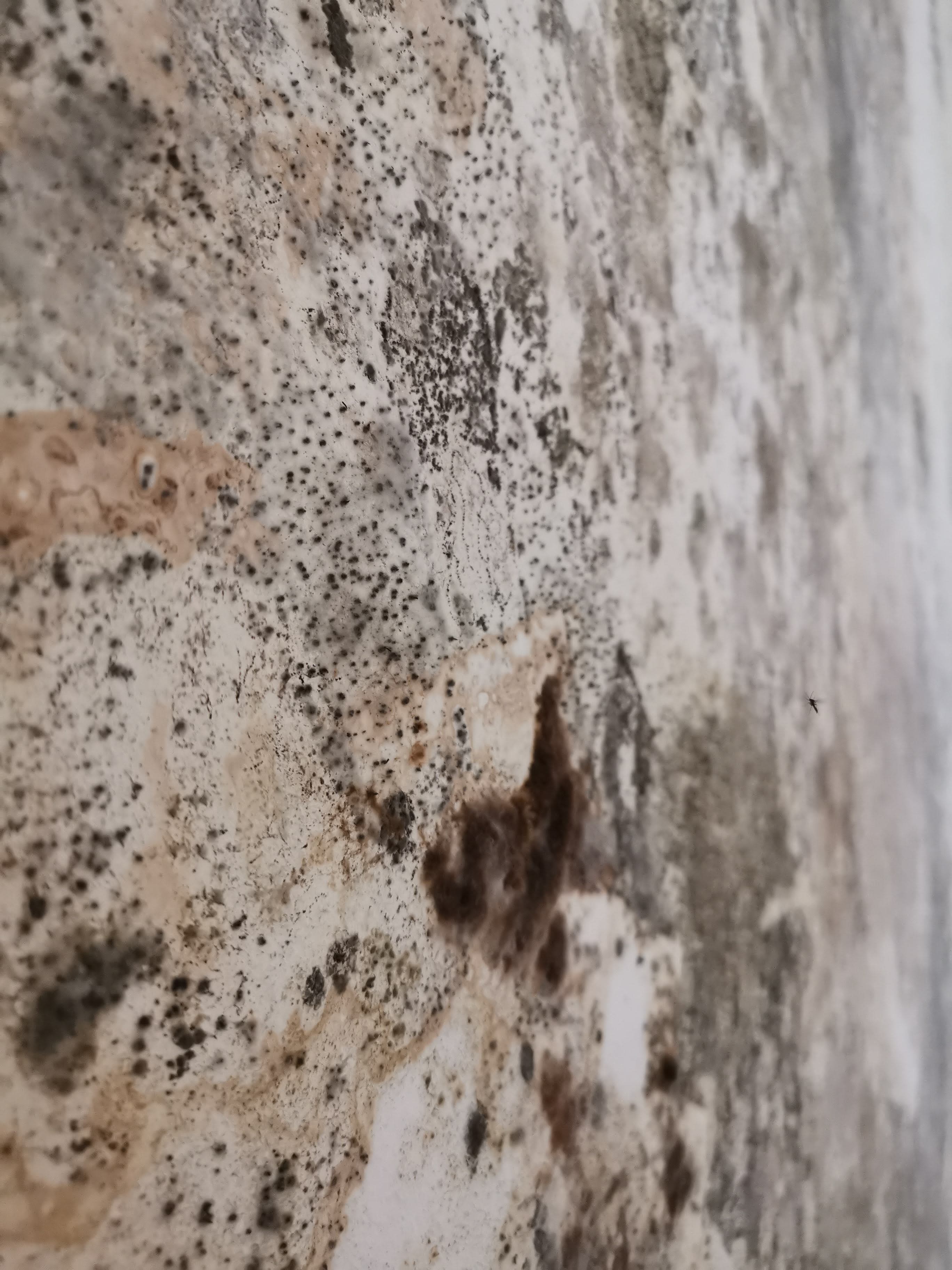
Embedding the concept of moisture balance
Hector and Valentina are hopeful that using the academic research of the IEDE and UCL to underpin the impact-driven activities of the UKCMB will change the way we understand building moisture balance – both now and in the future.
“People sometimes assume, ‘there’s a lot we can do in research, but there’s not much we can do in practice,” says Valentina.
“But actually, there’s a lot we can do in practice as well. There are a few quick wins that we should all go for. We can start by seeing that patch of mould as a symptom, a sign that something in the building is out of balance.”
Hector sees the task ahead in terms of creating awareness not just in industry, but in the general public.
“Right now, our collective understanding of buildings and their interactions with the environment is limited. But I believe we can empower people, especially younger generations, to gain that understanding”
About the authors
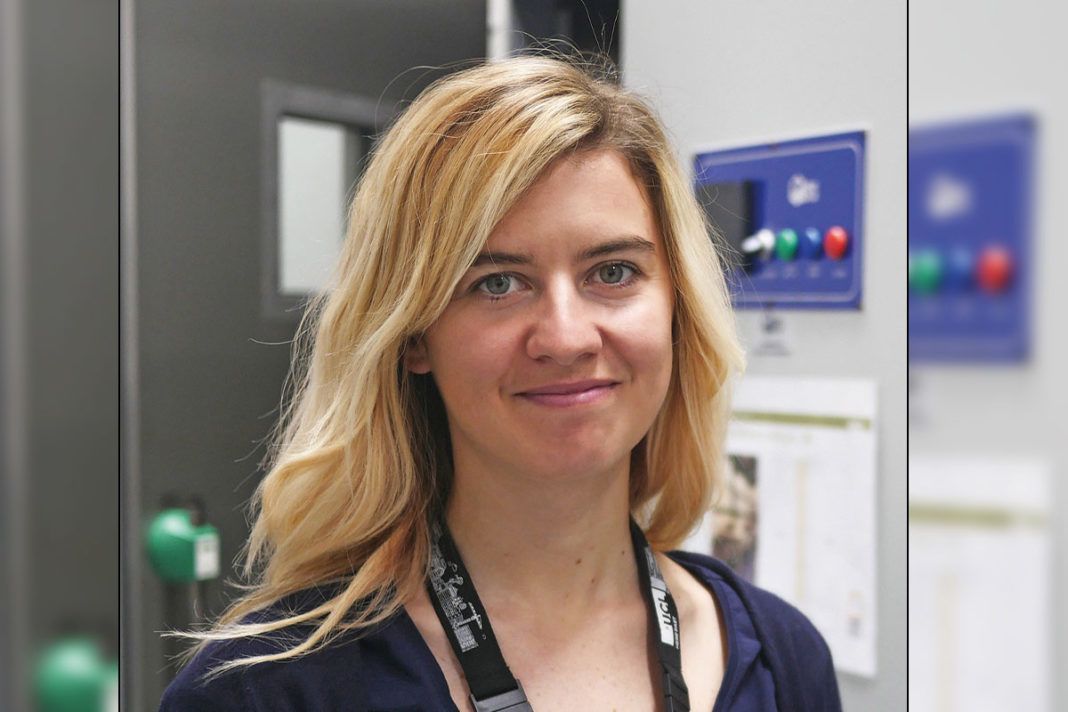
Dr Valentina Marincioni
Lecturer in Building Physics and Programme lead of the MSc in Smart Buildings and Digital Engineering at the Bartlett School of Environment Energy and Resources, Institute for Environmental Design and Engineering, University College London
Valentina is a building scientist focused on moisture in buildings. She develops tools for assessing risk, improving insulation and guiding retrofits, and leads technical work at the UK Centre for Moisture in Buildings.

Professor Hector Altamirano-Medina
Professor of environmental design, engineering, and health at the Bartlett School of Environment Energy and Resources, Institute for Environmental Design and Engineering, University College London
Trained as an architect, Hector's research focuses on the impact of indoor environments on health. His work has influenced building regulations and supports better moisture management in homes. He leads projects on mould, humidity and building performance, and is Academic Director of the UK Centre for Moisture in Buildings.
Learn more about health, wellbeing and sustainable buildings
UCL's Health, Wellbeing and Sustainable Buildings MSc is designed to meet the growing demand for specialists to drive the health and wellbeing agenda in the design, assessment, retrofit and operation of sustainable buildings.
Story produced by All Things Words
© UCL The Bartlett 2024

